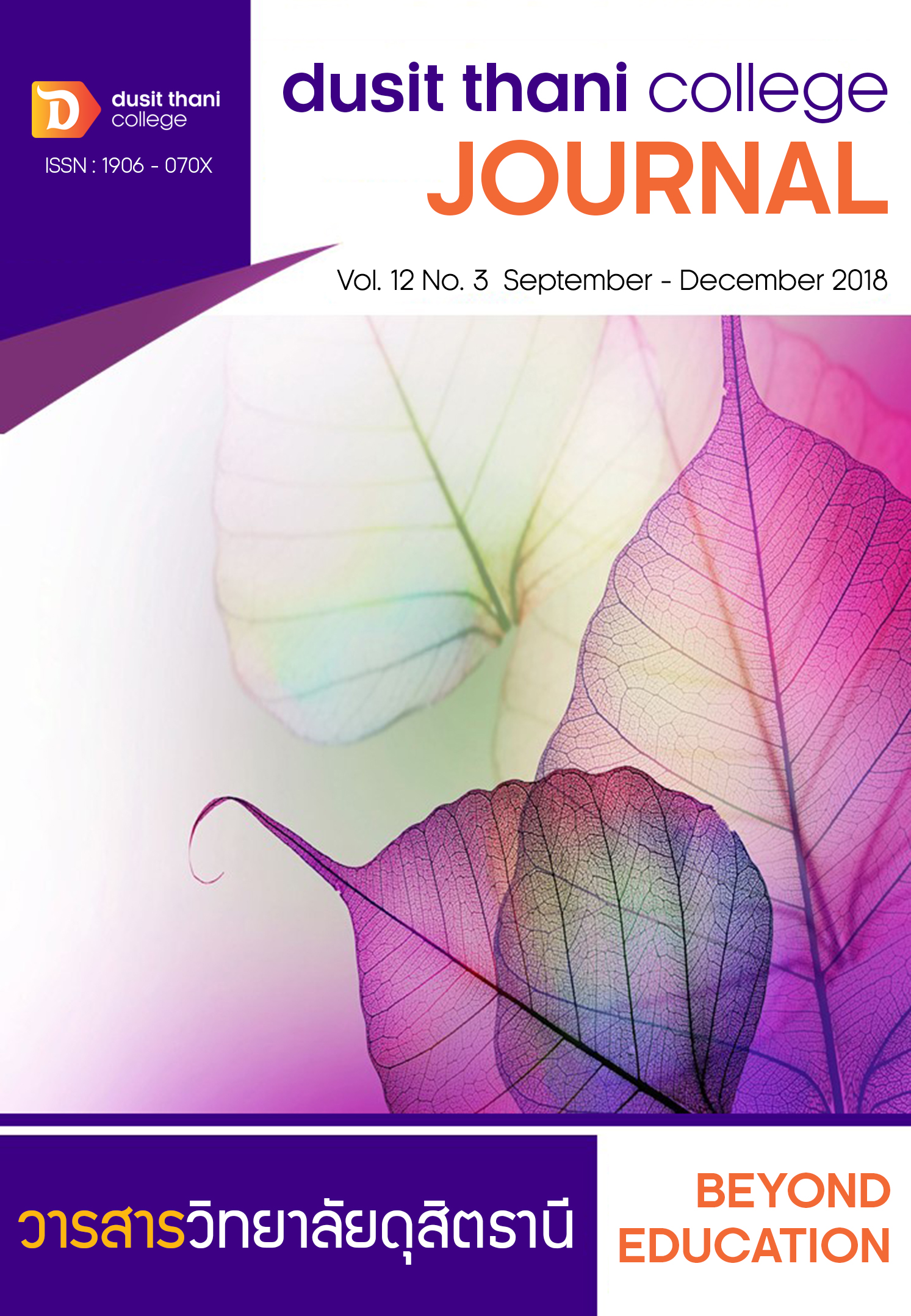The Study of the Effects of Population Change at Riverbanks’s Communities Toward the Guality of Water at Phetchaburi River in 10 Years (2006 - 2015)
Main Article Content
Abstract
The purposes of this research were firstly, to study the effects of population change at riverbanks’s communities toward the quality of water at Phetchaburi river in 10 years, between 2006 and 2015. Secondly, the guidelines on monitoring water pollution caused by the activities of the people in the communities were proposed. Qualitative and quantitative data were collected and the analyzed by multiple regression analysis.
The results of the study showed that the population over the 10 - year period (2006 - 2015) has increased in all areas. In 2006, the population size was the biggest with 87,582 persons. However, the number of population has been declining every year. In 2015, the total population was 83,741. Considering the area, it was found that the areas with the increased total population were the downstream and upstream areas with the increasing percentage of 7.84 and 3.40 respectively from 2006 to 2015. Furthermore, there was a linear settlement pattern of the people living along the Phetchaburi river. Multiple regression analysis method was used to analyze the data with the consideration of the factors affecting population changes in five areas: storage zone, upstream, municipality, downstream, and seawater influenced and the 4 indicators of water quality in the Phetchaburi river during the dry season - Dissolved Oxygen (DO), Biochemical Oxygen Demand (BOD), Total Coliform Bacteria (TCB), and Fecal Coliform Bacteria (FCB). It was found that the population change in all areas could be explained by the quality of the water in the Phetchaburi river. However, the population change in downstream area could best explain the quality of water with the percentage of 62.9.
The results of this study by areas showed that the population changes in the storage zone, upstream, municipality, downstream and seawater influenced area could explain the quality of the water in the Phetchaburi River with the percentage of 43.8, 58, 58.9, 62.9 and 45.7 respectively. Regarding the water quality index, Dissolved Oxygen (DO) could best describe the relationship between population change and water quality in the Phetchaburi river in all areas except in downstream area where Total Coliform Bacteria (TCB) could best describe the relationship between population change and the water quality in the Phetchaburi river.
Article Details
Article Screening Policy
- All research and academic articles to be published must be considered and screened by three peer reviews in the relevant field / article.
- All articles, texts, illustrations and tables published in the journal are the personal opinions of the authors. Editors don't always have to agree. And no responsibility whatsoever is the sole responsibility of the author.
- The articles to be published must never be published. Where did you first publish? And not in the consideration of other journals If the audit found that there has been a duplicate publication It is the sole responsibility of the author.
- Any article that the reader sees as being plagiarized or impersonated without reference. Or mislead the work of the author Please let the journal editor know it will be your greatest blessing.
References
2. Chen, Ye, J.J. Cheng, and K.S. Creamer. (2008). Inhibition of anaerobic digestion process: A Review. Bioresourcs Technology, 99:4044-4064.
3. Cheng Leong Goh, Gillian Clare Morgan. (1982). Human and Economic Geography.
Oxford University Press.
4. Chunkao, K., C. Nimpee, and K. Duangmal. (2012). The King's initiative using water Hyacinth to remove heavy metals and plant nutrients from wastewater through Bueng Makkasan in Bangkok, Thailand. Ecological Engineering, 39: 40-52.
5. Chunkao, Kasem. (2004). Environmental Scince. Bangkok: Kasetsart University Press.
6. Department of Provincial Administration (2015). Data Base of Population and Household in Phetchaburi Province. Patum Thani: Department of Provincial Administration.
7. Local Administration Organization. (2015). Statistic of Registration in 10 Year (2006-2015). Phetchaburi: Subdistrict Municipality (Thayang, Ban Lad, Ban Leam), Town Municipality Phetchaburi และSubdistrict Administrative Organization (Tamrue, Ban Yang, Tha Lang, Tha Khoi, Samor Plue. Tha Sen, Ton Mamueng, Nong Sano, Bang Kum, Tha Rang. Bang Krok, Ban Leam).
8. Pollution Control Department. (2001). The Study and Development of Biological Pollution Indicators in Phetchaburi River. Bangkok: Pollution Control Department.
9. ______________. (2000). Water Quality Standards of Thailand. Bangkok: Pollution Control Department.
10 Regional Environment Office 8th (Ratchaburi). (2015). Annual Report of Environment Situation in Regional Environment Office 8th in Year 2015. Ratchaburi: Regional Environment Office 8th (Ratchaburi).
11. SiriBoon, Siriwan. (2006). Overview of the Inner Gulf of Thailand‘s Communities. Bangkok: Prasukchai Press.
12. Srigate, Janon. 2009. Effect of Community Activities to Water Quality in Phetchaburi River, Phetchaburi Province. Bangkok: Master of Science (Environmental Science), College of Environment, Kasetsart University.
13. Udomsinroj, Kriengsak. (2008). Environmental engineering. Bangkok: Chula Press.
14. UN-Water. (2010). UN-Water Statement on Water Quality: UN-Water Global Assessment of Sanitation and Drinking-Water (GLAAS). Sanitation Updates: published by UN GLAAS Report.
15. Wacharatin, Theemaporn. (2008). Planning And Design For Transit Nodes In Old Commercial Areas: A Case Study Of Talat Phlu, Bangkok. . Bangkok: Chula Press.
16. WHO and UNICEF. (2010). Progress on Sanitation and Drinking Water. World Health Organization and UNICEF, France: WHO-Press.


